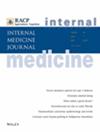Efficacy and safety of using cilostazol versus aspirin in secondary stroke prevention: systematic review and meta-analysis of randomised controlled clinical trials
Abstract
Background
Secondary stroke prevention is crucial for reducing recurrent events and associated morbidity. Cilostazol, a phosphodiesterase III inhibitor, is considered an alternative to aspirin for patients with ischaemic stroke due to its potentially lower risk of haemorrhagic complications. This meta-analysis evaluates the efficacy and safety of cilostazol versus aspirin for secondary stroke prevention. It provides a basis for drug selection and observation of secondary stroke prevention strategies.
Methods
A comprehensive search was conducted in PubMed, Cochrane Library, EMBASE and Web of Science databases for randomised controlled trials comparing cilostazol with aspirin in secondary stroke prevention. Key outcomes included recurrence of ischaemic stroke, intracranial haemorrhage (ICH), death, effective rate and incidence of adverse events. Meta-analysis was performed using a random-effects model, and heterogeneity was assessed using I2 statistics and Cochran's Q test. Publication bias was evaluated using Doi plots and Luis Furuya-Kanamori index.
Results
Thirteen studies involving 8993 participants were included. Cilostazol significantly reduced the recurrence of ischaemic stroke (risk ratio (RR): 0.766, 95% confidence interval (CI): 0.624–0.941) and ICH (RR: 0.392, 95% CI: 0.250–0.616) compared to aspirin. No significant differences were observed in overall mortality or adverse events. Cilostazol increased risks of headache, dizziness, diarrhoea and tachycardia but reduced constipation. Heterogeneity was generally low to moderate.
Conclusion
Cilostazol is an effective alternative to aspirin for secondary stroke prevention, reducing the risk of recurrent ischaemic stroke and ICH. However, its use is associated with certain adverse effects. Clinicians should consider individual patient profiles and preferences when selecting anti-platelet therapy for stroke prevention. Further research is warranted to optimise cilostazol use in clinical practice.


 求助内容:
求助内容: 应助结果提醒方式:
应助结果提醒方式:


